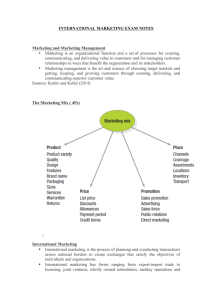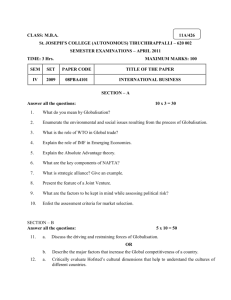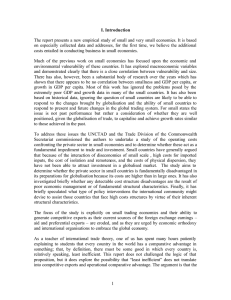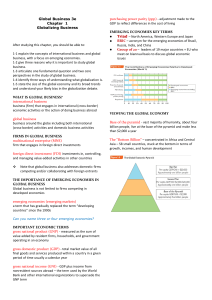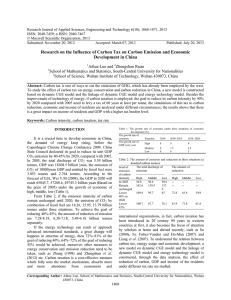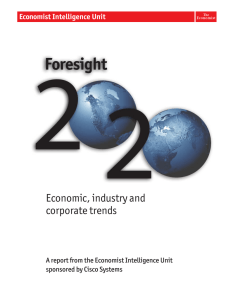Future Trends Reports - GR:EEN Project
advertisement
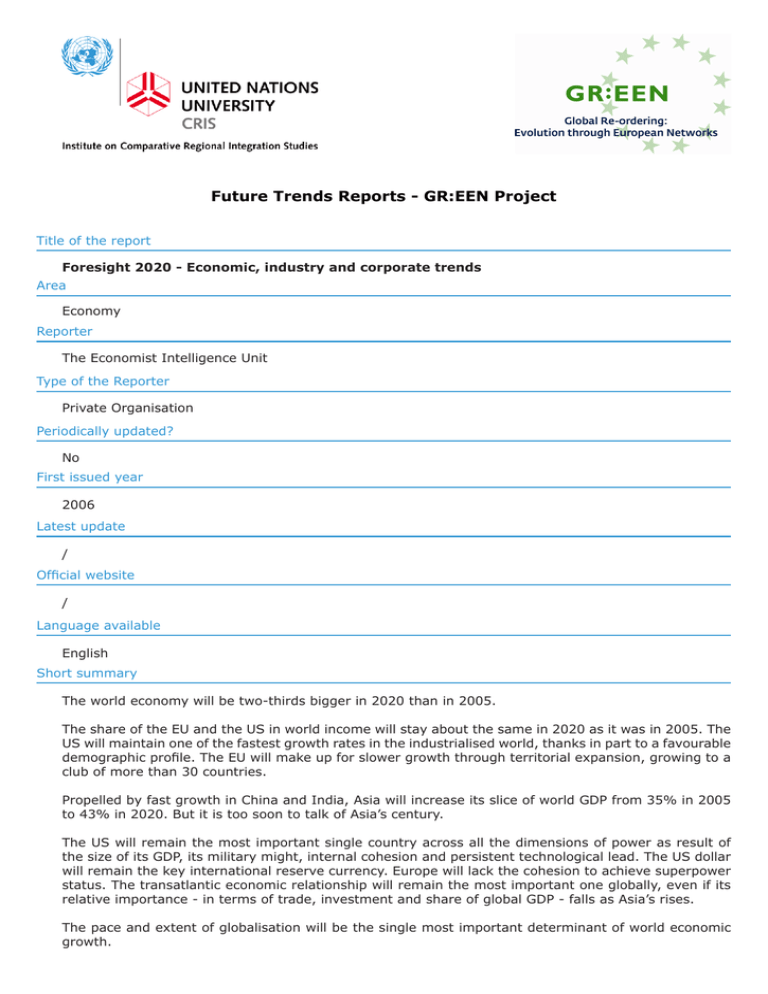
Future Trends Reports - GR:EEN Project Title of the report Foresight 2020 - Economic, industry and corporate trends Area Economy Reporter The Economist Intelligence Unit Type of the Reporter Private Organisation Periodically updated? No First issued year 2006 Latest update / Official website / Language available English Short summary The world economy will be two-thirds bigger in 2020 than in 2005. The share of the EU and the US in world income will stay about the same in 2020 as it was in 2005. The US will maintain one of the fastest growth rates in the industrialised world, thanks in part to a favourable demographic profile. The EU will make up for slower growth through territorial expansion, growing to a club of more than 30 countries. Propelled by fast growth in China and India, Asia will increase its slice of world GDP from 35% in 2005 to 43% in 2020. But it is too soon to talk of Asia’s century. The US will remain the most important single country across all the dimensions of power as result of the size of its GDP, its military might, internal cohesion and persistent technological lead. The US dollar will remain the key international reserve currency. Europe will lack the cohesion to achieve superpower status. The transatlantic economic relationship will remain the most important one globally, even if its relative importance - in terms of trade, investment and share of global GDP - falls as Asia’s rises. The pace and extent of globalisation will be the single most important determinant of world economic growth. Key trends 1. Globalisation. It is too early to talk of Asia’s century, but there will be a redistribution of economic power. Emerging markets, and China and India in particular, will take a greater slice of the world economy. Non-OECD markets will account for a higher share of revenue growth between now and 2020 than OECD economies. Labour-intensive production processes will continue to shift to lower-cost economies, which will still enjoy a massive wage advantage over developed markets. The pace of globalisation will be arguably the critical determinant of the rate of world economic growth. 2. Demographics. Population shifts will have a significant impact on economies, companies and customers. The favourable demographic profile of the US will help to spur growth; ageing populations in Europe will inhibit it. Industries will target more products and services at ageing populations, from investment advice to lowcost, functional cars. Workforces in more mature markets will become older and more female. 3. Atomisation. Globalisation and networking technologies will enable firms to use the world as their supply base for talent and materials. Processes, firms, customers and supply chains will fragment as companies expand overseas, as work flows to where it is best done and as information digitises. As a result, effective collaboration will become more important. The boundaries between different functions, organisations and even industries will blur. Data formats and technologies will standardise. 4. Personalisation. Price and quality will matter as much as ever, but customers in developed and developing markets will place more emphasis on personalisation. Products and services will be customisable, leading firms to design products in a modular fashion and, in the case of manufacturers, assemble them in response to specific customer orders. Customers and suppliers will be treated in different ways, depending on their personal preferences and their importance to the business. 5. Knowledge management. Running an efficient organisation is no easy task but it is unlikely on its own to offer lasting competitive advantage. Products are too easily commoditised; automation of simple processes is increasingly widespread. Instead, the focus of management attention will be on the areas of the business, from innovation to customer service, where personal chemistry or creative insight matter more than rules and processes. Improving the productivity of knowledge workers through technology, training and organisational change will be the major boardroom challenge of the next 15 years. Suggestions None made Methodology Survey and modelling Reference to other trends reports? If yes, which reports? /
